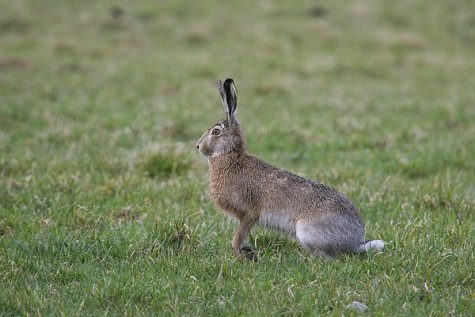Brown hares rambling about
Photo: Arne Ader
Video snet by Kati Kalda
Translation: Liis
Brown hare
Brown hare; European hare Halljänes Lepus europaeus
We see the brown hares in open landscapes; the seashore is not the worst place for meeting them. The bunny mum has had two litters already this year and one more is likely to come. In summer the litters usually have three young (leverets). At birth they see, and have fur. They are left on their own at once and the female only visits once a day, when dusk arrives, to suckle them. The young animals must manage the difficulties of life on their own, and their enemies are countless, down to domestic cats.
The summer diet of brown hares is leguminous plants and grasses, in addition they are coprofags. After a meal the first more liquid droppings are eaten again, so that everything vital is extracted from the food. Our common „hare pearls“ are left after a second round in the body.
In Estonia they are settlers, brought here in the 19th century by the German manor lords as hunting prey but they also moved here by land from Lithuania and Poland in the south at about the same time.
The body length of an adult hare is half a metre or more, weight up to seven kilos. The tail is nearly ten centimetres and black on top, this shows well in the video. The iris is yellow and eyes are placed at the sides of the head, allowing a nearly 360 degree field of view.
With many enemies the brown hares are saved by their watchfulness and fast feet – their running speed is up to 50 km/h and spurts some twenty kilometres faster. We have all heard of hare dodges.
See the video:
Kati recorded the video in Pärnumaa, Audru parish, Liu säär.









